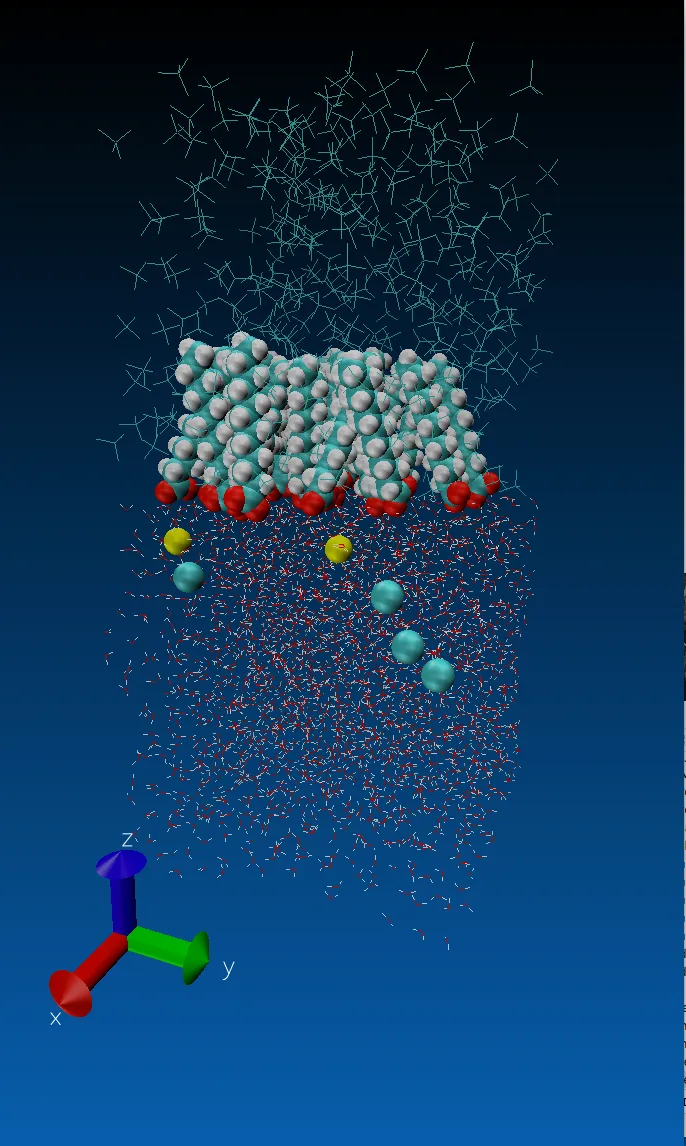Here are some images generated from simulation files using the Visual Molecular Dynamics program (VMD). The surfactant molecules in the image are sodium dodecanoate, the organic layer is carbon tetrachloride, the aqueous layer is water, and the divalent cations in the aqueous layer are calcium (yellow) with chloride counterions (blue). 
Let me know in the comments if this type of molecular modeling research interests you. I have tons of more theoretical data to share on this specific chemical system. OpenMM was used to perform the simulations in python. The simulations were ran using Nvidia CUDA architecture GPUs. Each simulation of 25ns takes about 5 days with every step in the simulation at 0.5 femtoseconds (10^-15 seconds). This system was studied in order to look at how the presence of divalent cations along the interface can change the interfacial width of the system.